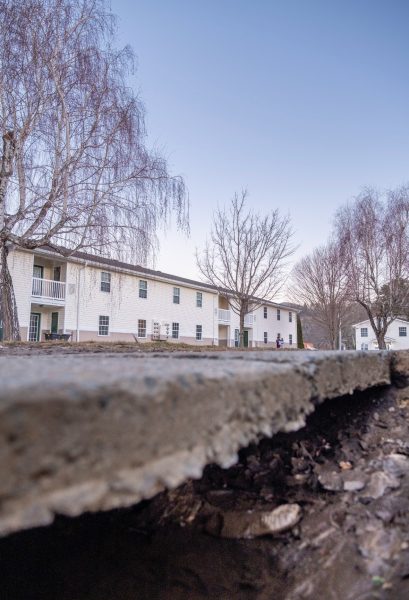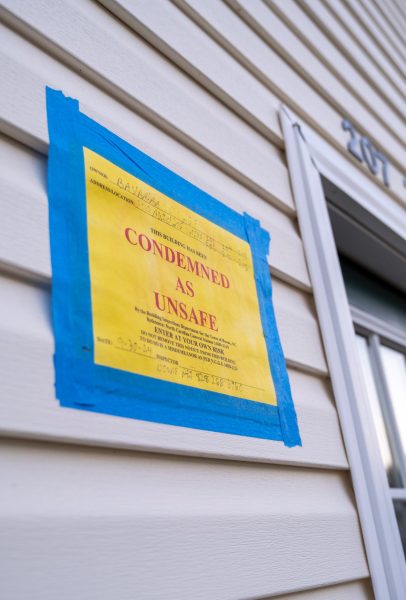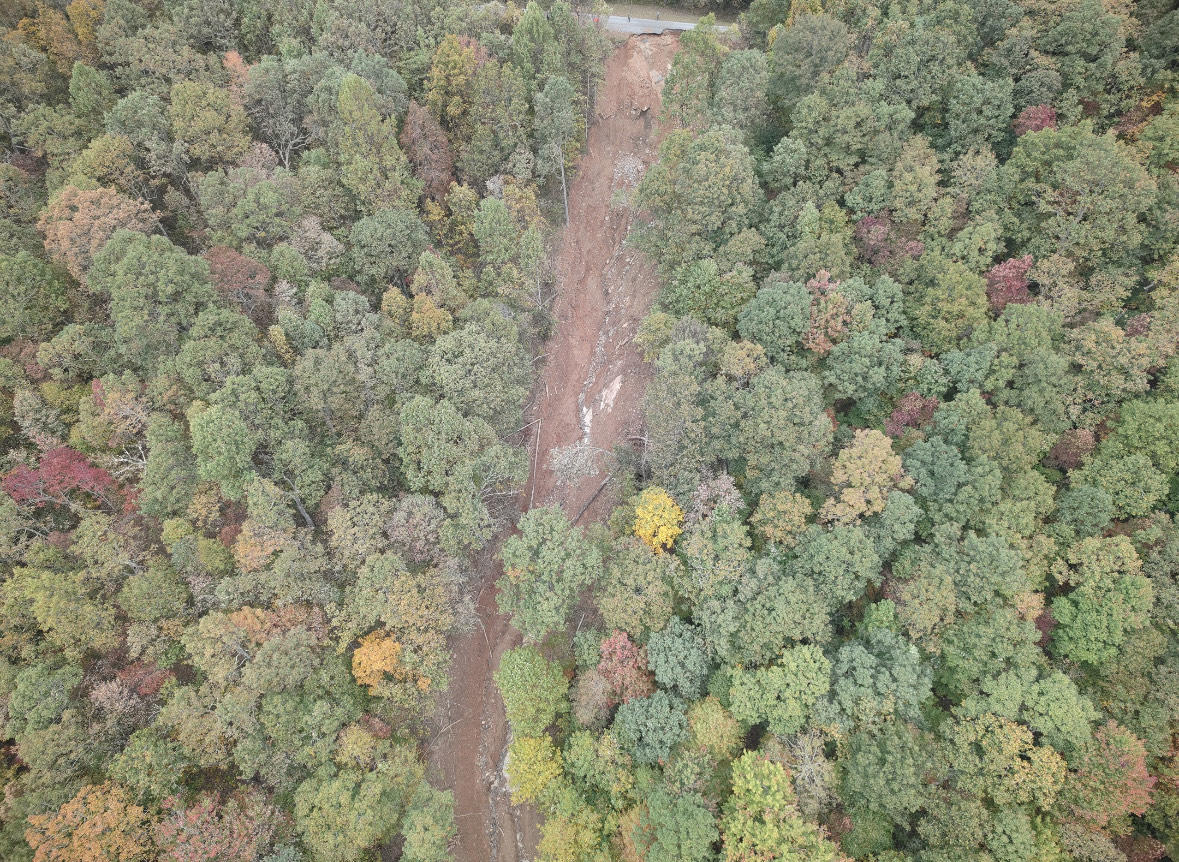In the early morning of Sept. 27, Western North Carolina was hit by Hurricane Helene. The storm brought significant flooding to the Town of Boone. King Street became a waterway, Rankin Hallways flooded, Walmart was wrecked and residential communities including Cottages of Boone, Bradford Park and Bavarian Village saw damage.
The Weather Network reported 13 inches of rain in the Town of Boone. A curfew from 7 p.m. to 7 a.m. was issued for the town and classes at App State were canceled until Oct. 15.
App State served as a community hub during the immediate recovery after Helene. The Holmes Convocation Center hosted the American Red Cross and Central Dining Hall provided free meals to anyone in need, serving 40,000 meals in total. Campus Wi-Fi was made available to the public, allowing those in need of Wi-Fi to access services. Students also contributed, volunteering more than 500 hours for local recovery and cleanup efforts in the following weeks.
In the process of making the High Country more resilient, scientists argued land use practices and economic measures must change to make sure a disaster at Helene’s scale does not happen again.
“Acting like these floods were unprecedented is surprising to me,” said Brian Bonville, an ecologist at the Watauga Soil and Water Conservation District.
Bonville said other researchers, alongside themself, have been concerned about the risk of a large-scale, destructive flood for years as a result of the rapid development of Boone.
Bonville said some of the worst-hit areas, including Walmart and Bavarian Village, were heavily paved and lacked porous surfaces making them more susceptible to flooding. They described poor soil management practices, such as channeling creeks and planting non-native species, as contributing to the flood.
“Native plants are going to have deeper, more persistent roots that help hold water,” Bonville said. “In wetlands like the greenway, they can even help slow water during floods.”
The problems with land management that Bonville described are deeply rooted in the history of the Southern Appalachian Mountains.
Donald Edward Davis’ novel “Where There are Mountains” goes into detail about the impact the loss of forests has had on the environment of Appalachia.
The damage started in the late 19th century when industrialists in the post-Civil War period utilized the vast old-growth forests in Western North Carolina and Eastern Tennessee to build a thriving timber industry. This practice led to the destruction of most of these old-growth forests, leaving only Nantahala and Pisgah National Forests. The old-growth forests served as flood protection and enriched the soil. Their loss left the land vulnerable.
“The environmental effects of timbering on such a large scale were immediately felt,” Davis wrote in the book. “Erosion, fires, and flooding increased significantly in many parts of the region, damaging prime cropland along streams and destroying wildlife habitat.”

The last large-scale flood to hit the Town of Boone occurred in 1940, when the logging industry was fresh.
Jim Hamilton, App State Sustainable Development professor and Watauga County’s director for the North Carolina State Cooperative Extension, said even though Helene was destructive, the town’s land has recovered significantly since 1940, with an estimated 65-70% of land in Watauga County being forested today.
“The county looks very different than it did in 1940,” Hamilton said. “We have a lot more native cover than they did.”
Although he is optimistic about the quality of the forests, Hamilton shares Bonville’s concerns about overdevelopment in the county and future disasters, especially wildfires.
“West Virginia has mountaintop removal, we have mountaintop development,” Hamilton said. “It’s the developed areas that exacerbate these disasters.”
After Hurricane Helene, Hamilton and the Watauga County Soil and Water Conservation office have been a part of the cleanup process and worked to educate farmers and landowners on land use practices through seminars. The seminars teach local farmers sustainable agricultural methods and how to safely incorporate technology into their work.
Before Helene hit, the Town of Boone had already prepared for disaster relief. The town falls under the High Country Hazard Mitigation Plan, which provides guidelines for local officials to operate under disaster conditions.
Brandon Wise, the Town of Boone’s deputy director of planning and inspections, said the town had a good amount of “rainy day” funds saved in case of an event like Helene. Wise also mapped the floodplain of the Watauga River to predict possible danger zones prior to the storm hitting.
“We mapped the floodplain so we could see where things might go wrong,” said Matt Krause, Boone’s emergency coordinator. “Obviously, we couldn’t have expected the storm to be as bad as it was. It was so much more than anyone could have expected.”
Krause, who was a firefighter in Boone before being hired as the emergency coordinator, was active on the morning of Helene. He was stationed in Deep Gap and worked with the local fire department and Marines to rescue drivers from the flooding.
Wise lives in downtown Boone and was able to travel safely to work at the Town of Boone office the morning Hurricane Helene hit. There, he was able to help coordinate immediate recovery efforts.
Not all of his coworkers were able to respond as quickly. Many were stranded in their homes or neighborhoods because of floods or broken roads. Until the cell towers were repaired, they had no way to reach one another. Wise said initially, the brief loss of communication was a major obstacle.
“All of the cell towers in town were out at one point,” Wise said. “Typically, you only lose some of them.”
After the cell towers became unavailable, the AppState-ALERT team began collaborating with the Town of Boone. App State was able to restore power quickly and the AppState-ALERT system was also operational. The Town of Boone and App State collaborated to share important information with both locals and students. Krause said the AppState-ALERT system was integral to the town’s recovery process as communication lines were slowly but surely restored.
“Coordination went as well as it ever has,” Krause said. “ASU was great to step up in so many capacities. They stepped up not just for the town but for the whole community.”
For the past eight months, Wise and Krause have been working to return Boone to a sense of normalcy. This includes issuing business permits, reopening buildings and helping anywhere they are needed. A significant part of Wise and Krause’s work is done alongside state and federal officials, distributing public assistance grants through the Federal Emergency Management Agency.

FEMA has been a controversial entity in the High Country during the recovery period. FEMA has faced allegations of mismanaging funds and not doing enough repair work from communities in rural counties. Much of this criticism has come from President Donald Trump, who called for the dissolution of FEMA outright during a visit to the Town of Swannanoa in January. In March, Secretary of Homeland Security, Kristi Noem said in a cabinet meeting that she planned to “eliminate” FEMA.
Adam Newmark is a professor of political science in App State’s Department of Government and Justice Studies. He researches public and climate policy. He described the possible consequences of losing FEMA as “catastrophic.”
“Because of the massive amount of resources that FEMA provides to disaster relief, losing them would set the recovery process back by months,” Newmark said.
Newmark said FEMA does the best they can with the resources that they have, and is constantly working under constraints, such as asset caps. He said FEMA did a good job of getting out money and resources quickly to the communities that needed it most despite restrictions. He was also impressed with how the election was handled and how quickly polling stations in hard-hit areas were repaired or relocated when necessary.
Newmark is optimistic about Boone’s future resilience to extreme weather. He urged local governments to keep emergency funds supplied and for effective bipartisan legislation to be passed in times of need.
“Despite all of the criticism, we saw a lot of people working together,” Newmark said. “There was an impressive effort to coordinate.”
Rebuilding the Blue Ridge Parkway has been another facet of the recovery process in the High Country. The nation’s most-visited national park experienced widespread damage, including downed trees, landslides, roads washed out from underneath and the loss of the Linville visitor center. Most parts of the Blue Ridge Parkway near Boone are open to drivers, but construction at US 221/421 to Bamboo Road forces them to turn around from mileposts 280.9-285.5.
“Our goal is to restore the park and make it the place it was, but better,” said Rita Larkin, the communications director for the Blue Ridge Parkway Foundation, a nonprofit organization that helps manage and raise funds for the parkway.
Larkin said in February that repairing after Helene has been costly for the National Parks Service so far. A single landslide on the parkway costs millions of dollars to clean. Furthermore, Helene hit during the peak of tourist season, so the park lost out on valuable income from visitors.
Larkin said federal funding for the park has been consistent but stagnant, with donations from private groups and especially Western North Carolina locals to the Parkway Foundation providing most of their funds.
“People love the Blue Ridge Parkway,” Larkin said. “They’ve really stepped up to help with donations and I think they’ll keep helping until they get their park back.”



